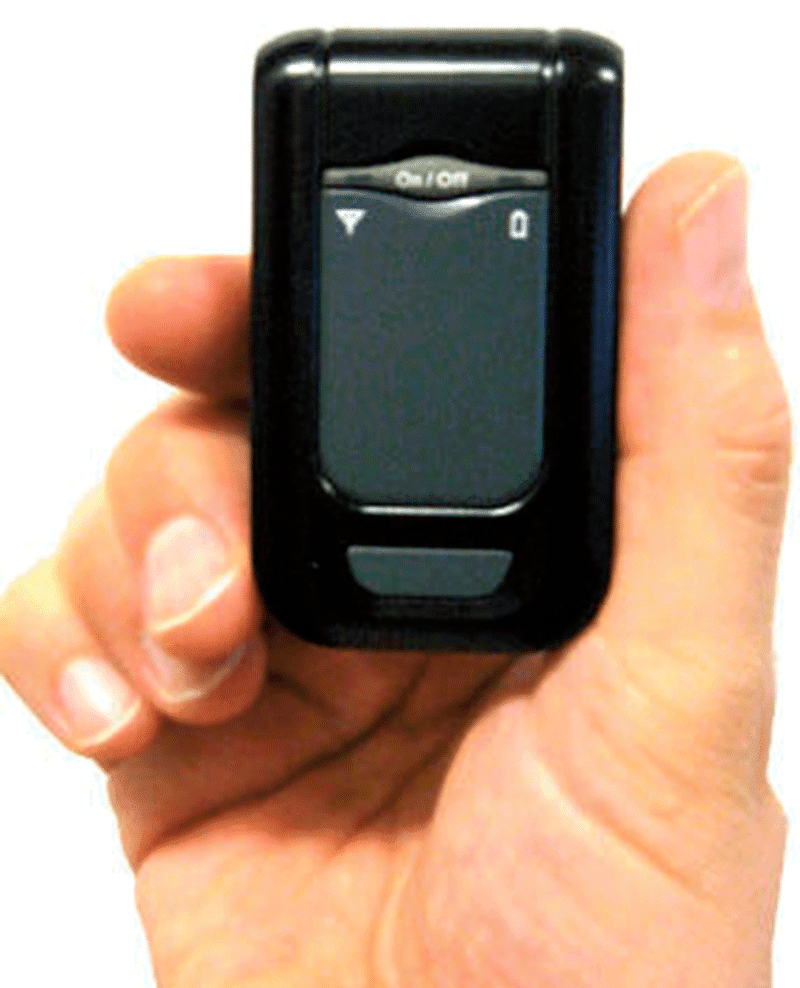Left to Their Own Devices – Plenty of Options Available for Home-monitoring Technology
While residential care services have broadened in recent years for seniors unable to live independently, technology has emerged as well to help older people stay in their homes longer, if they so choose — while giving some peace of mind to their families. Here are a few currently available devices, and what the health-tech media is saying about them.
GPS Trackers
Individuals with dementia face specific challenges at home — particularly the possibility they might wander from that home. To counter that challenge, a number of trackers, many that operate with global positioning system (GPS) technology, have emerged on the market.
A solution to wandering from the Alzheimer’s Assoc., the Comfort Zone Check-In application ($10 per month) allows caregivers to use a small tracking device to monitor their loved one with dementia.
“Comfort Zone Check-In combines the latest technology with flexibility, allowing families to change devices and plans as a person’s disease progresses and monitoring needs change,” according to the Alzheimer’s Assoc. “Using GPS and cellular technologies with online mapping, the entire family can proactively determine the location of the person with Alzheimer’s. Families log into a secure, password-protected website similar to logging into most e-mail systems and proactively establish safety zones.”
“Comfort Zone Check In has the potential to give peace of mind, both to those who care for Alzheimer’s patients, as well as patients themselves, who can get frustrated or distressed when people will not let them do anything independently,” noted Health and Life in a review. “It is not an over-exaggeration to say that Comfort Zone Check In could have a dramatic impact on Alzheimer’s care, especially as research continues to unlock the complexities of the condition and we understand more and more about it.
A new cellular tracking device, iTraq3 ($149) uses cellular towers to determine location, allowing it to be used anywhere there is service. The device itself is as small as a credit card, and its location is reported through a mobile application which allows the user to view a map of locations and timestamps. Itraq also features a ‘guard mode’ where users can specify a radius on a map, then receive alerts if and when the itraq goes beyond the pre-set radius.
“iTraq is a remarkable cellular tracking device for iPhone or iPad,” iGeeksBlog notes. “Being developed as the most effective gadget to track your things, it is the world’s first global location device. As iTraq uses cellular towers to determine location, it can be located anywhere else in the world where cellular service exists.”
Meanwhile, Pocketfinder ($159), a small, waterproof GPS devices, allow users to not only view a GPS location, but also an address, distance from the address, and the speed the device is moving. The app provides updates at the touch of a button through e-mail and text notifications. It also provides an unlimited number of ‘geofences’ that send an alert when the GPS leaves a specified area.
“While there are several similar GPS technologies in the market,” Digifloor notes, “PocketFinder removes the complexities of modern wireless technologies and offers a simple and easy solution that helps people coordinate and communicate with people and things.”
In-home Sensors
Rather than track people outside the home, another class of devices helps people know what their loved ones are up to in their homes. Activity-based sensors can reassure that the resident is up and about, carrying out daily tasks — or not.
For example, Alarm.com’s Wellness independent living solution ($99) integrates a suite of sensors and devices, and applies machine-learning algorithms to the data they generate to detect changes that may suggest risks. Wellness can report about changes in activity levels, sleeping and eating patterns, bathroom-visit frequency, and medication adherence, as well as emergency situations like wandering out of the home or falls.
“Far from being a contemporary Big Brother, the system provides real-time info on your loved one’s whereabouts and well-being, all without the use of intrusive cameras,” Reviewed reports. “The system uses a combination of bed-presence monitors, motion sensors, and panic buttons to track movement and alert users and caregivers of any unexpected changes in routine.”
One of the newest devices is the Inirv React ($239), which connects the stove to a sensor in the home and a smartphone app. The sensor will automatically turn the stove off if it no longer detects motion around the appliance after a long period of time. The stove can also be turned off remotely using a smartphone.
“You can control individual burners through your phone, of course, but the real star of the show is a sensor that sits on your ceiling,” according to Engadget. “If it detects gas, smoke, or prolonged inactivity, it automatically shuts off active burners. You shouldn’t have to worry about sparking a house fire just because you forgot to switch the stove off before you left for the movies.”
Meanwhile, the iGuardStove Intelligent ($495) is a pricier way to shut off the stove if a loved one is away from the cooktop for too long. It automatically shuts off the stove if cooking is left unattended, thanks to a two-part system of a power box and motion detector.
“The built-in wi-fi can help keep you posted online about how often the system has to shut down off your stove and send you alerts if it’s happening a little too often,” CNET noted. “The iGuardStove Intelligent is a good product if you are concerned about yourself or a loved one leaving a stove unattended.”
LifeAssist Technologies has developed the Reminder Rosie ($99), a clock that allows the recording of personalized messages and reminders that will be broadcast at scheduled times for whomever is in the home — perhaps a reminder to take medication or that the grandchildren will be coming over for dinner.
“Using revolutionary speech recognition technologies, Reminder Rosie announces multiple, loud, personalized reminder alarms at specific times daily, weekly, on a specific date, annually, in any language,” Caregiver Products reports. “Rosie can also tell the time, date, or today’s reminders to help organize each day. This talking alarm clock provides a simple solution to help users remember medications, appointments, household tasks, social activities, and other helpful information without touching any buttons. Reminder Rosie is a low-tech, stress-free memory aid that seniors or those with dementia, Alzheimer’s, or memory loss can actually use.”
Emergency pendants with fall detection serve a specific purpose, and have been around for longer than most other technologies in this article. Worn around the wrist or neck, they can be pressed in case of an emergency, such as after a fall, and a call is immediately made to 911 and/or pre-programmed numbers of family members.
Along with its lightweight and waterproof design, Philips Lifeline products are some of the more popular solutions on the market: HomeSafe, with autoalert fall detection (from $44.95 per month), works at home, while its GoSafe pendant, with autoalert and two-way voice (from $54.95 per month), uses up to six locating technologies, including GPS, to find someone in an emergency.
Medication Reminders
Then there are medication reminders, a field that has attracted plenty of innovation in recent years, with devices designed to remind, dispense, and manage medication.
Top5Reviews chooses as its favorite model the medSmart e-Pill automatic dispenser ($490), which comes with two keys, six daily alarms, a patient-compliance dashboard, and alarms that alert with sound and blinking lights.
“One buyer that we spoke to applauds its particularly deep medication compartments, compared to other models on the market,” the site notes. “One word of caution: it is a good buy only if the person taking the medicine is able to remember what the alarm signifies, is able to actually get the medicine out of the dispenser, and who are likely to take the pills right after removing them from the e-Pill.
For a budget option, Wirecutter, in its reviews of e-pill products, noted that the clock of the 31-day MedCenter System monthly pill organizer ($96) “was the easiest and most intuitive to program of any device we tested. If you can set a bedside alarm clock, you can set up this reminder device.
“However,” it went on, “you need to load the MedCenter’s pill trays, which each have their own plastic cover — individually, a task that can be a little arduous if you’re planning out a whole month. And you can’t individually lock the plastic pill caddies, which makes this model fine for a self-care situation or one where the patient is fully aware and not easily confused.”




Comments are closed.